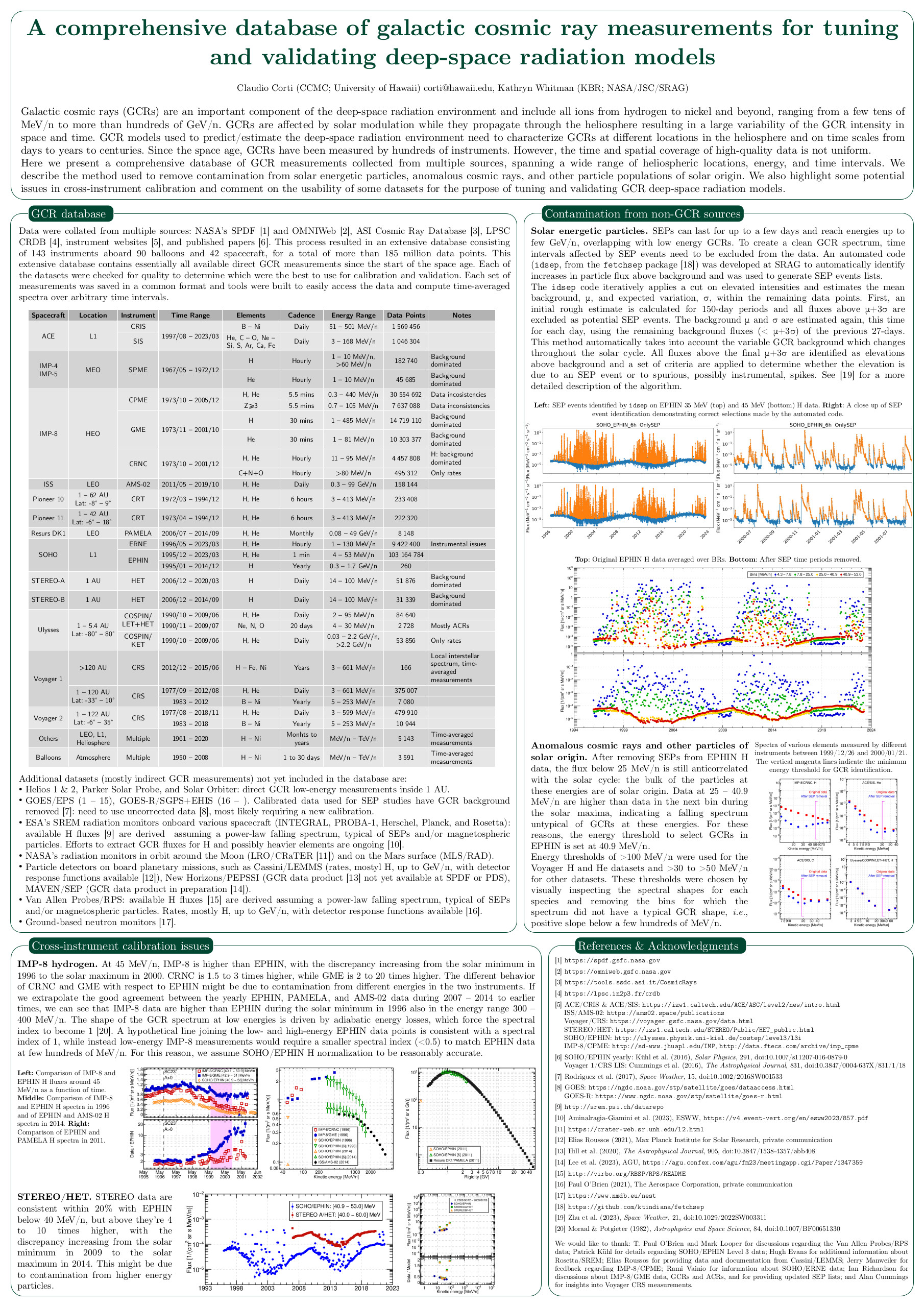Authors: Claudio Corti (CCMC; University of Hawaii at Manoa), Kathryn Whitman (KBR; NASA/JSC/SRAG)
Galactic cosmic rays (GCRs) are an important component of the deep-space radiation environment and include all ions from hydrogen up to nickel and beyond, ranging from a few tens of MeV/n up to more than hundreds of GeV/n. GCRs are affected by solar modulation while they propagate through the heliosphere resulting in a large variability of the GCR intensity in space and time. GCR models used to predict/estimate the deep-space radiation environment need to characterize GCRs at different locations in the heliosphere and on time scales from days to years to centuries. Since the space age, GCRs have been measured by hundreds of instruments. However, the time and spatial coverage of high-quality data is not uniform.
Here we present a comprehensive database of GCR measurements collected from multiple sources, spanning a wide range of heliospheric locations, energy, and time intervals. We describe the method used to remove contamination from solar energetic particles, anomalous cosmic rays, and other particle populations of solar origin. We also highlight some potential issues in cross-instrument calibration and comment on the usability of some datasets for the purpose of tuning and validating GCR deep-space radiation models.


